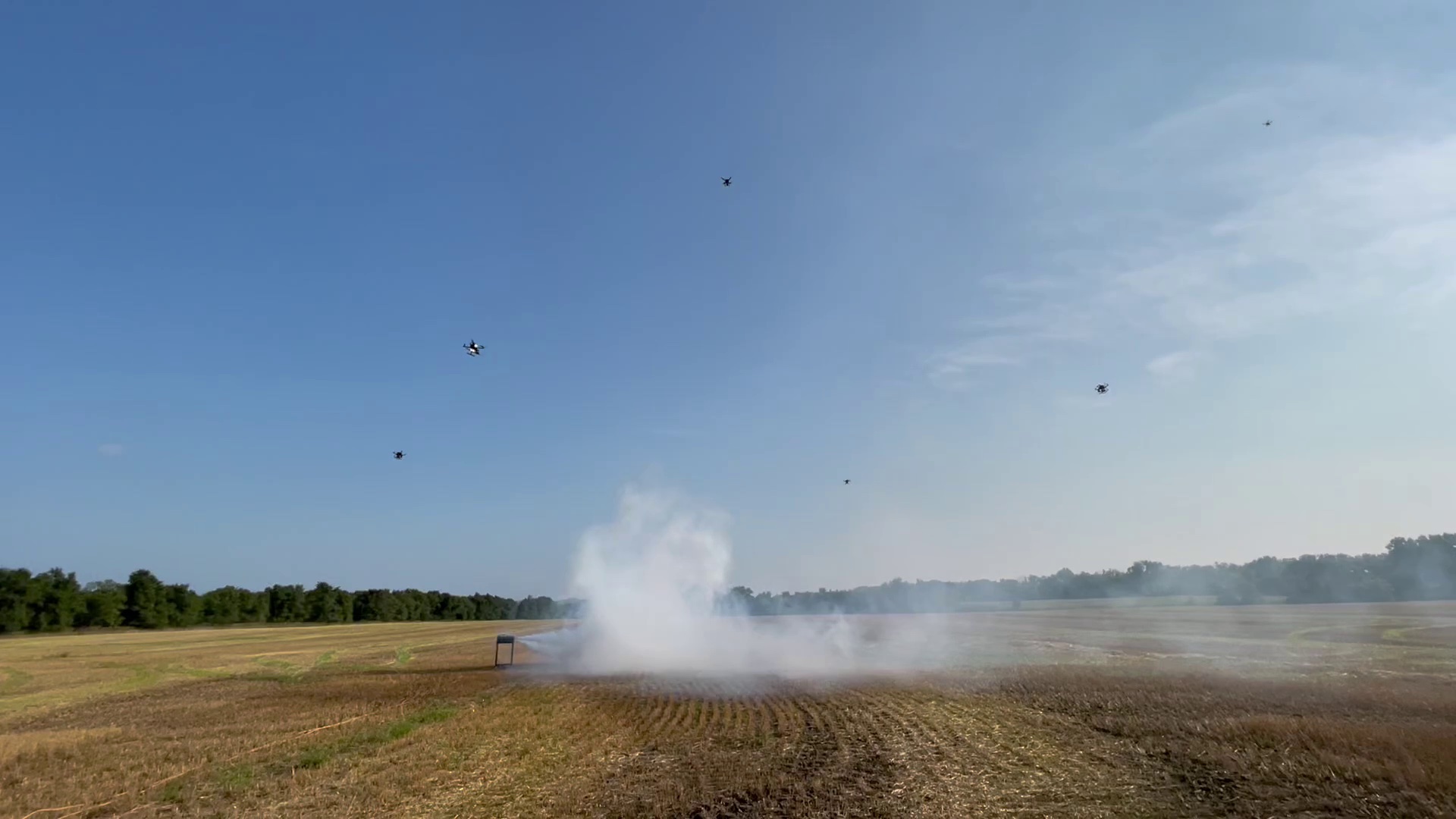Workforce Blog: It’s Time for a New Way to Engineer
Workforce Blog: It’s Time for a New Way to Engineer


Simply doing the job is not enough. Engineers have a responsibility to ensure their work has positive long-term impacts—not short-term performative ones.
It’s a wonderful thing to be an engineer. Every single day, in countless ways, we get to make things better. Few professions allow its practitioners that kind of personal satisfaction. What a privilege that is.
But before we pat ourselves on the back for a job well done, we need to consider the broader context, the downstream implications of what we produce, and the impacts we have on the community, the environment, and the next generation.
There is an arrogance among many engineers who believe that making stuff work is enough. We deliver a practical solution to a discrete problem and call it a day. Yet too often our solutions ignore the ways they impact—or fail to impact—the wider community.
Building a new highway is a terrific boon to our transportation infrastructure. But what about the community it divides and the neighborhood it displaces? Building a power plant or manufacturing facility strengthens our economy and delivers vital products. But what about the spike in childhood cancers that plagues the surrounding homes?
There must be more to the value proposition that engineers provide. It’s not enough to meet the specs, stay within budget, and finish on time. Engineers and their employers must recognize a higher responsibility—and fulfill it with every project they undertake.
Engineering is the only STEM discipline where a bachelor’s degree is equivalent to a professional certification. The day you receive your diploma, you can rightly call yourself a professional engineer. But something is sacrificed by cramming so much technical education into four short years. Engineers, like everyone else, need training in the humanities and the social sciences—we need to become fully rounded human beings—before we can hope to solve problems in an authentically human-centered, empathetic way.
There is a verse from a wonderful poem by Edward Markham that perfectly expresses this challenge:
Why build these cities glorious
—If man unbuilded goes?
In vain we build the work, unless
—The builder also grows.
Our engineering schools are not training human doers—they’re educating human beings. Because before we can competently do, we must first fully be. That means making sure that our design decisions account for human factors and needs.
Whether it’s building a subdivision atop a U.S. Environmental Protection Agency Superfund site or dividing a neighborhood with an interstate highway, there are too many examples of engineering decisions made without sufficient consideration of the broader implications and human factors involved.
More Insights: Engineering the Future Takes All of Us
Sensitivity to the impact that engineered solutions have on all the various stakeholders of a project is not innate; it must be taught in our engineering schools and fostered across our engineering enterprises.
Nearly every large company today has a corporate social responsibility (CSR) function that aims to give back to the communities they touch. Pick up any annual report or visit any corporate website, and you’re sure to see the company’s good works splashed across the page.
But for too many, their CSR activities are performative: They give out logo backpacks to school kids or sponsor community-based activities like concerts and museums. There’s nothing wrong with backpacks and concerts, but they can’t substitute for meaningful works that build communities, educate the marginalized, and ultimately fill the talent pipeline with those who are underrepresented in the engineering profession.
For CSR to have a meaningful impact, it must address the underlying inequities that exist in every community. Don’t just sponsor a concert—build a science lab where kids can go after school to discover the possibilities of a STEM career.
Discover the Benefits of ASME Membership
One positive trend is the increasing prevalence of community benefit agreements (CBAs), where public entities require their private contractors to include public amenities in their projects. In my hometown of New Orleans, I advocated that CBAs be included in many of the contracts awarded to rebuild the city after Hurricane Katrina. I failed to get the needed political traction and, as a result, we saw big companies building playgrounds and basketball courts—which are great, but instead of playgrounds and parks, what if mutually agreed upon CBAs required companies to build labs in schools, or provide access to technology? What if contractors offered math tutoring and STEM readiness?
I understand that engineers aren’t social workers, and people don’t start engineering companies to do social justice work. But what’s clear is that we can’t continue to operate as we always have, with a narrow focus on the project and too little concern for the communities in which our projects live.
The rules that governed the practice of engineering in the last century no longer apply. Today, successful engineers and engineering companies are those who consider the human impacts of their work, and measure their success not in short-term profits but on the long-term impact they have on their customers, their employees, the communities in which they’re located, and on the planet where they exist.
Calvin Mackie is an award-winning mentor, inventor, author, and renowned advocate for STEM education. A valued partner of the ASME Foundation, he is founder and CEO of STEM NOLA and STEM Global Action, which provide STEM-related programs and events to K-12 students, families, and communities.
But before we pat ourselves on the back for a job well done, we need to consider the broader context, the downstream implications of what we produce, and the impacts we have on the community, the environment, and the next generation.
There is an arrogance among many engineers who believe that making stuff work is enough. We deliver a practical solution to a discrete problem and call it a day. Yet too often our solutions ignore the ways they impact—or fail to impact—the wider community.
Building a new highway is a terrific boon to our transportation infrastructure. But what about the community it divides and the neighborhood it displaces? Building a power plant or manufacturing facility strengthens our economy and delivers vital products. But what about the spike in childhood cancers that plagues the surrounding homes?
There must be more to the value proposition that engineers provide. It’s not enough to meet the specs, stay within budget, and finish on time. Engineers and their employers must recognize a higher responsibility—and fulfill it with every project they undertake.
Engineering is the only STEM discipline where a bachelor’s degree is equivalent to a professional certification. The day you receive your diploma, you can rightly call yourself a professional engineer. But something is sacrificed by cramming so much technical education into four short years. Engineers, like everyone else, need training in the humanities and the social sciences—we need to become fully rounded human beings—before we can hope to solve problems in an authentically human-centered, empathetic way.
There is a verse from a wonderful poem by Edward Markham that perfectly expresses this challenge:
Why build these cities glorious
—If man unbuilded goes?
In vain we build the work, unless
—The builder also grows.
Our engineering schools are not training human doers—they’re educating human beings. Because before we can competently do, we must first fully be. That means making sure that our design decisions account for human factors and needs.
Whether it’s building a subdivision atop a U.S. Environmental Protection Agency Superfund site or dividing a neighborhood with an interstate highway, there are too many examples of engineering decisions made without sufficient consideration of the broader implications and human factors involved.
More Insights: Engineering the Future Takes All of Us
Sensitivity to the impact that engineered solutions have on all the various stakeholders of a project is not innate; it must be taught in our engineering schools and fostered across our engineering enterprises.
Nearly every large company today has a corporate social responsibility (CSR) function that aims to give back to the communities they touch. Pick up any annual report or visit any corporate website, and you’re sure to see the company’s good works splashed across the page.
But for too many, their CSR activities are performative: They give out logo backpacks to school kids or sponsor community-based activities like concerts and museums. There’s nothing wrong with backpacks and concerts, but they can’t substitute for meaningful works that build communities, educate the marginalized, and ultimately fill the talent pipeline with those who are underrepresented in the engineering profession.
For CSR to have a meaningful impact, it must address the underlying inequities that exist in every community. Don’t just sponsor a concert—build a science lab where kids can go after school to discover the possibilities of a STEM career.
Discover the Benefits of ASME Membership
One positive trend is the increasing prevalence of community benefit agreements (CBAs), where public entities require their private contractors to include public amenities in their projects. In my hometown of New Orleans, I advocated that CBAs be included in many of the contracts awarded to rebuild the city after Hurricane Katrina. I failed to get the needed political traction and, as a result, we saw big companies building playgrounds and basketball courts—which are great, but instead of playgrounds and parks, what if mutually agreed upon CBAs required companies to build labs in schools, or provide access to technology? What if contractors offered math tutoring and STEM readiness?
I understand that engineers aren’t social workers, and people don’t start engineering companies to do social justice work. But what’s clear is that we can’t continue to operate as we always have, with a narrow focus on the project and too little concern for the communities in which our projects live.
The rules that governed the practice of engineering in the last century no longer apply. Today, successful engineers and engineering companies are those who consider the human impacts of their work, and measure their success not in short-term profits but on the long-term impact they have on their customers, their employees, the communities in which they’re located, and on the planet where they exist.
Calvin Mackie is an award-winning mentor, inventor, author, and renowned advocate for STEM education. A valued partner of the ASME Foundation, he is founder and CEO of STEM NOLA and STEM Global Action, which provide STEM-related programs and events to K-12 students, families, and communities.



.jpg?width=850&height=478&ext=.jpg)


